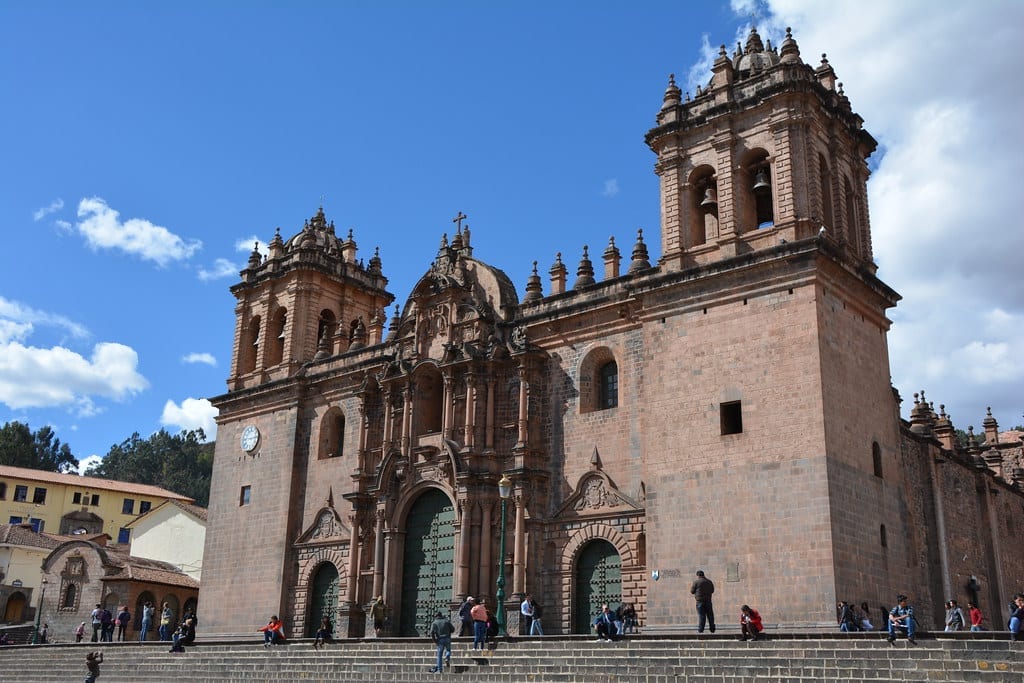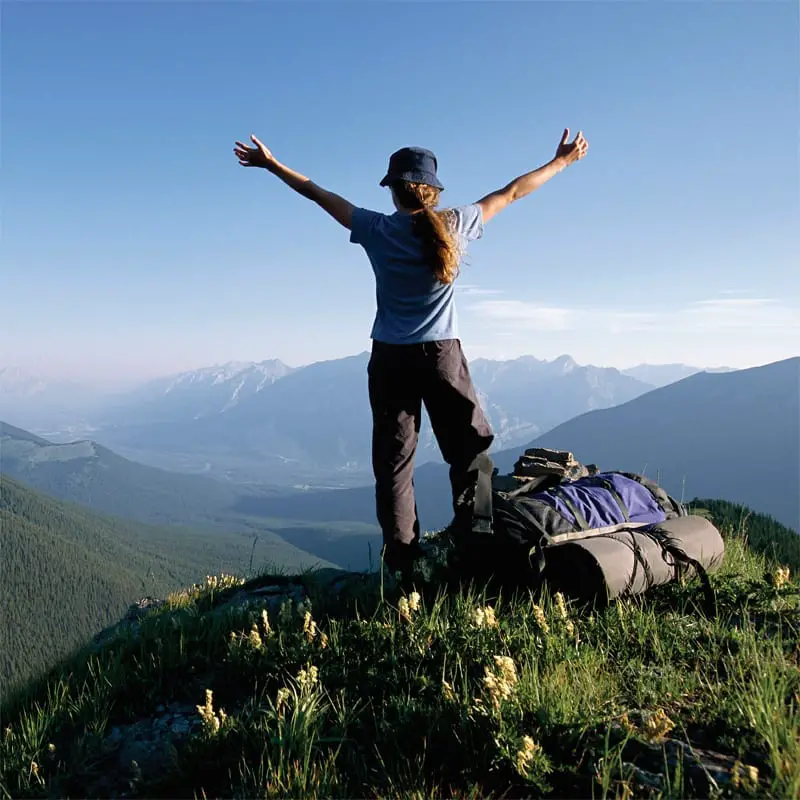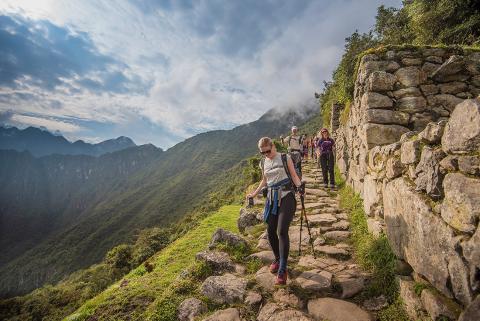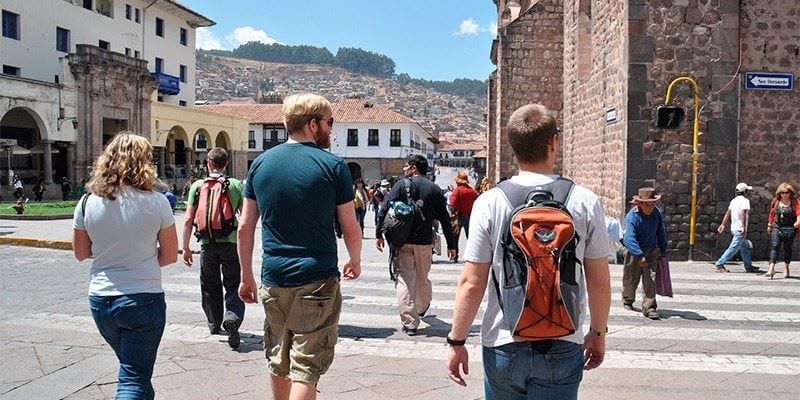Guide: How to Deal With Altitude Sickness
James Bustamante is Native to New York but born to Peruvian parents. He has been traveling throughout Latin America since early 2003 and finally made his home in Peru. James has made his way by eating and traveling through almost every country in Central and South America.
Last Updated on December 20, 2022 by James Bustamante
Altitude sickness is one of the major topics travelers will want as much information on when going to high-elevation destinations like Cusco, Machu Picchu, Lake Titicaca, and Rainbow Mountain. Altitude sickness and how to avoid it is even more critical for travelers planning to take a Multi-day hike to Machu Picchu, like the Inca Trail or The Salkantay Trek.
So, how to deal with altitude sickness? Remember this problem can start as soon as you arrive in the highland city.
Is Altitude Sickness Common?

Sooner or later, if you plan on taking a trip to Cusco, you will have to deal with Altitude sickness for yourself or someone you are traveling with. Approximately half of the people traveling to a high-elevation location will have some minor symptoms during the first couple of days, while one out of every four might have a more challenging time with more prominent symptoms.
How Soon Will Altitude Sickness Symptoms Take To Set In?

Most people will feel the change in elevation 1-2 hours after arriving in the high-altitude location. Symptoms of elevation sickness can take around the same amount of time to manifest. When travelers come to Peru, their first taste of altitude sickness comes with their arrival to Cusco. Most Peru tour packages begin with a flight from Lima to Cusco.
The flight is very short, averaging an hour and fifteen minutes, so you go from sea level (Lima) to 12,500+ feet (3,400 meters) upon your Cusco arrival. Extremely sensitive travelers might feel the elevation change as soon as they come off the plane, while others might take a few hours to notice it. So what are the symptoms of elevation sickness?
What Are The Symptoms Of Altitude Sickness?
Ranging from the very mild to the more prominent, below is a short list of symptoms of Altitude sickness to look out for.
Symptoms of Altitude Sickness
- headache
- nausea and vomiting
- dizziness
- tiredness
- loss of appetite
- shortness of breath
The sudden elevation change can have an intense effect on people or a very mild one depending on several factors. For example, some people will adjust in under 24 hours while feeling a slight pressure or a minor headache, while others might have symptoms including vomiting, headaches, etc.
Most travelers will feel shortness of breath in the first 24-48 hours while their body adapts.
Significant Factors in Altitude Sickness To Consider

Elevation sickness might be unavoidable for most people. Some will have a higher propensity to feel stress from the altitude change; however, a few factors play into adjusting to the elevation faster than others.
- Fitness level
- Previous altitude experience
- Recent meal (how much and what types of food you ate recently)
- First day activities
- Genetics
Fitness Level
It might sound redundant to mention that being in good physical condition would benefit someone at a high altitude, but it is worth mentioning. While at high altitudes, your body will try to receive the same amount of oxygen as at sea level, working harder and pumping more blood to receive more oxygen. In essence, your body is working harder to go back to normal levels so that a fit person will have an easier time going through this process most of the time.
As you might have guessed, our body will adapt faster if we are already in relatively good physical condition. Therefore, cardiovascular training is a great way to train before arriving in places like Cusco.
Of course, this is only sometimes the case. Having good cardiovascular abilities helps, but there are better ways to avoid elevation sickness. Remember, if your Peru trekking tour is coming up, it is wise to hit the gym a few more times a week or adjust your cardio.
Previous Altitude Experience
Going from sea level to over 12,000 feet above sea level can be quite the experience if you’ve never been to a high-altitude location. This is also a significant factor in minimizing the effects of altitude sickness; travelers with hiking experience in relatively high altitudes will adjust much faster to Cusco.
If travelers plan on taking one of the Machu Picchu Hikes, it would be a good idea to arrive 2-3 days early to acclimate. Even if the hiker has had experience in other high-elevation cities, the acclimatization period is essential and part of the protocol to avoid getting sick.
Recent Meals and General Nutrition

Your most recent meal can play a big part in acclimatization. The flight from Lima to Cusco takes about an hour and fifteen minutes, so whatever you ate at the Lima airport or whatever snacks you tried during the flight might make it harder to adjust to the height where Cusco is located.
Start your adjusting period before you even board the domestic flight to Cusco. Make sure you have a small meal that is manageable to digest. If you are flying to Cusco in the morning, a couple of eggs and/or some fruit should suffice. Remember to have plenty of liquids to stay hydrated.
Bland diets might not sound fun, but neither is feeling sick for a day or two. Go for a bland diet for the first day or so, and you will have the rest of your trip to eat all the delicious Peruvian dishes you want.
The idea is to make your body adjust to the altitude and not spend time trying to digest a big meal. In addition, if your body is pumping blood to deliver oxygen over time, it shouldn’t be burdened by trying to digest a large meal simultaneously.
First Day Activities

As mentioned above, your first day in Cusco should be dedicated to acclimatization. First, your body will need to rest. Various methods have been tested, and sleeping in high altitudes is best for your body to adjust. On your first day, remember that sleep, light walks, light meals, and plenty of fluids are the way to go.
A mistake many travelers make is trying to take advantage of their first day and booking an activity like a day trek or a tour. This will often make the traveler sick a few hours into the tour. So instead, we always suggest and insist on waiting, at the very least, a day before starting any excursions.
Genetics
Some people are just more prone to suffering the effects of elevation sickness.
Studies suggest that a group of genes predicts who will get altitude sickness with greater than 90 percent accuracy. There is a great scientific study on how genetics play a determining factor in suffering from altitude sickness displayed in Scientific American.
https://www.scientificamerican.com/article/genetic-tests-for-altitude-sickness/
Medicine For Altitude Sickness
There are several medications that hikes use when suffering from elevation sickness, like dexamethasone, a steroid medicine that reduces brain swelling. Dexamethasone, however, should be reserved for bad cases of altitude sickness and not taken as a pre-symptom medication.
People take other medications early on, like Sorojchi pills, which mix caffeine and aspirin with other medicines.
There are more holistic routes that help you get through the first couple of days, like infusions of Coca Leaves with Muna (another highland plant). Coffee is also an excellent option to get you through the first few days as long as an upset stomach isn’t your primary symptom.
Conclusion
Learning how to deal with altitude sickness can help travelers get through their first few days in a high-elevation city with minimal symptoms. Remember to eat light meals, have plenty of fluids, and stay active in the form of short walks. If severe symptoms set in, dexamethasone should be administered by a certified Medical professional.
Frequently Asked Questions About Elevation Sickness
No. It really depends on various factors but basically, everyone will feel the change in elevation to some level.
Yes. There are a variety of medications, both pharmaceutical and holistic, for elevation sickness. Most though work is based on caffeine.
Yes. Coca tea is the local cure for everything in Cusco. It does help with the adaptation period due to the caffeine content, though. It also tastes pretty great in tea form.
While energy drinks are full of caffeine, they are also full of sugar. Sugar really doesn’t help much and can be counterproductive during the acclimatization period.
That’s a difficult question to answer. Everyone is different, but once you feel sick from the elevation, it will probably take a full day or two of rest to feel better. It’s always optimal to go through the protocol as early as possible.
Cusco has hospitals and plenty of doctors. We actually have a doctor on call in case someone feels ill during their stay in Peru and not just for elevation sickness.


